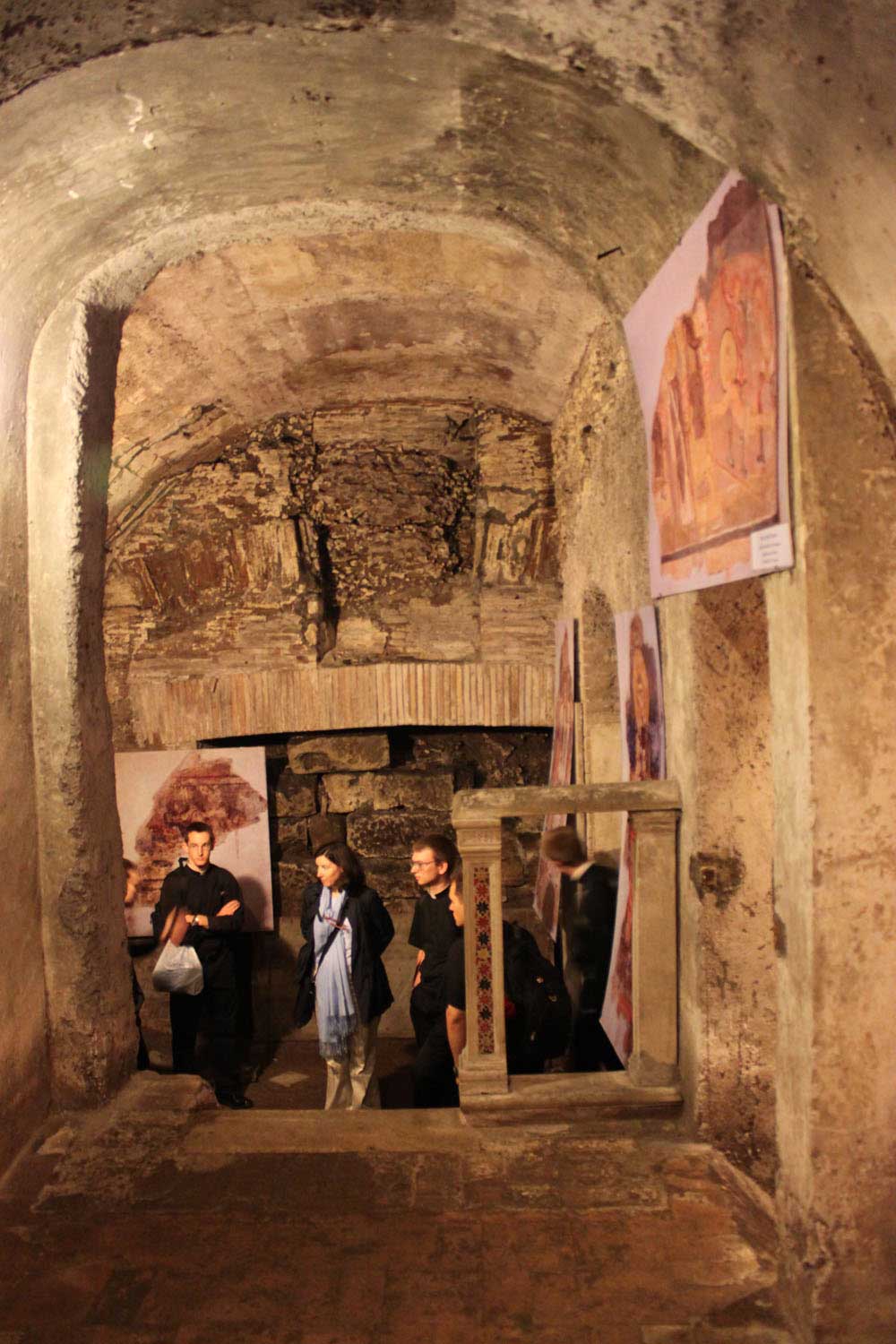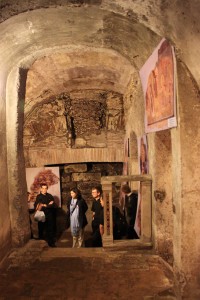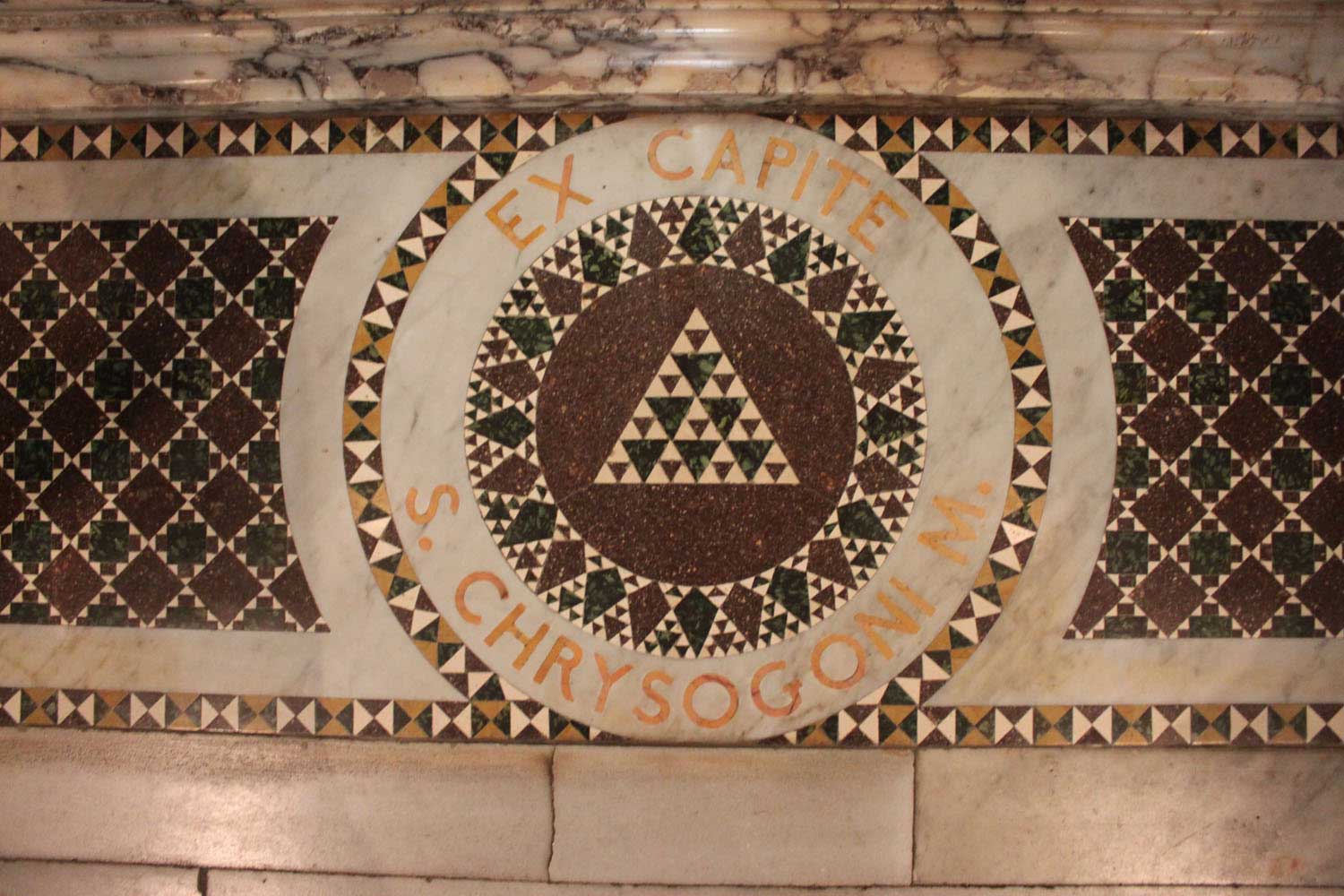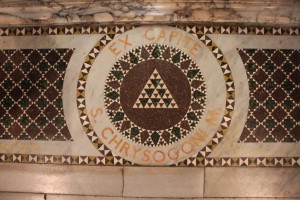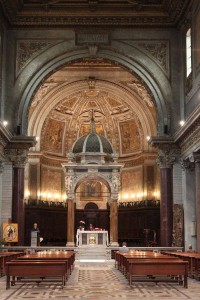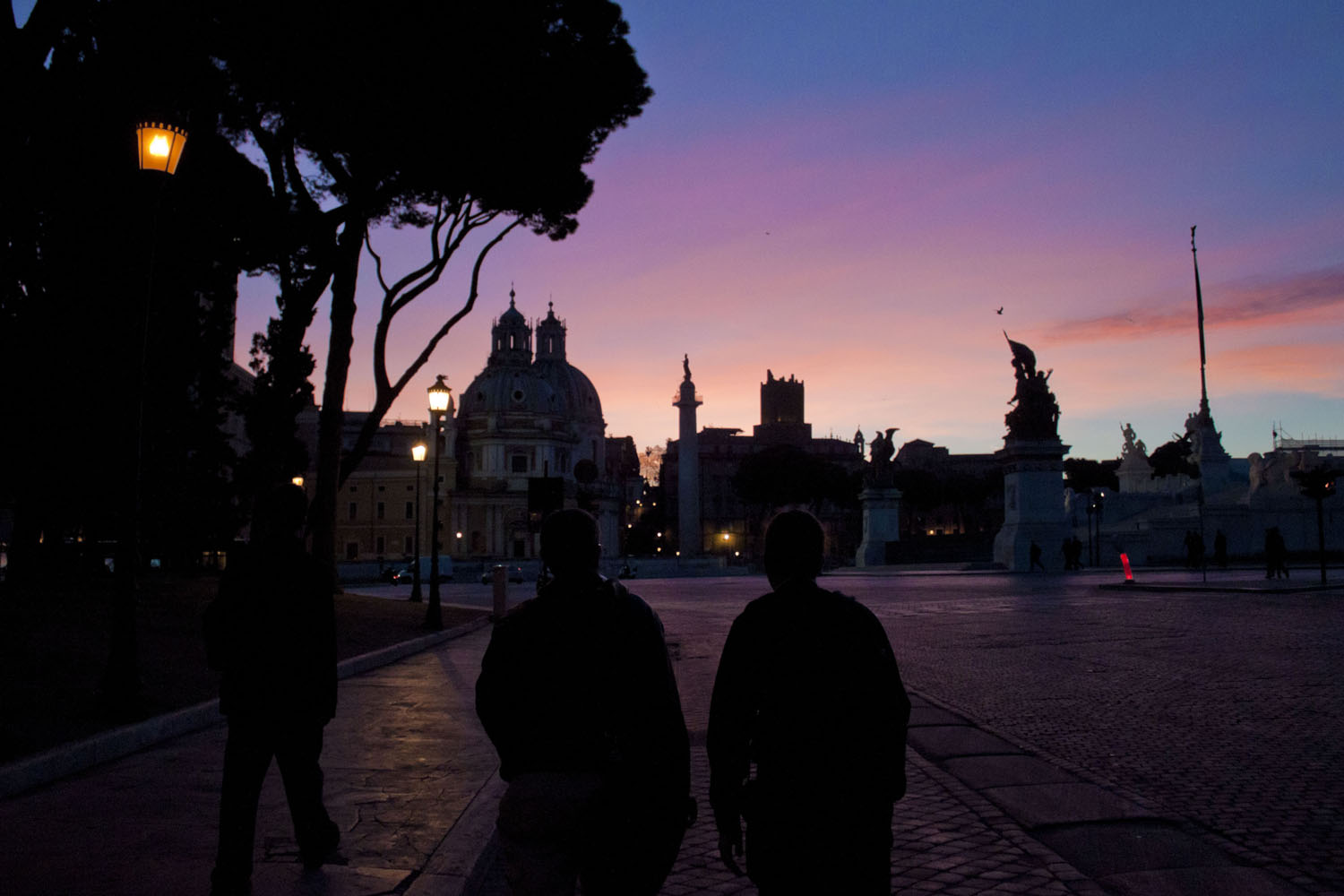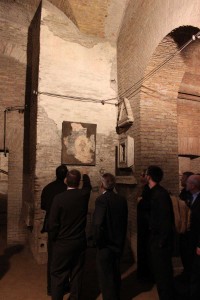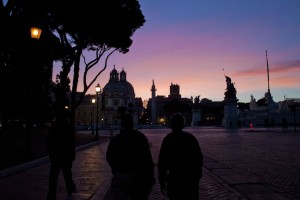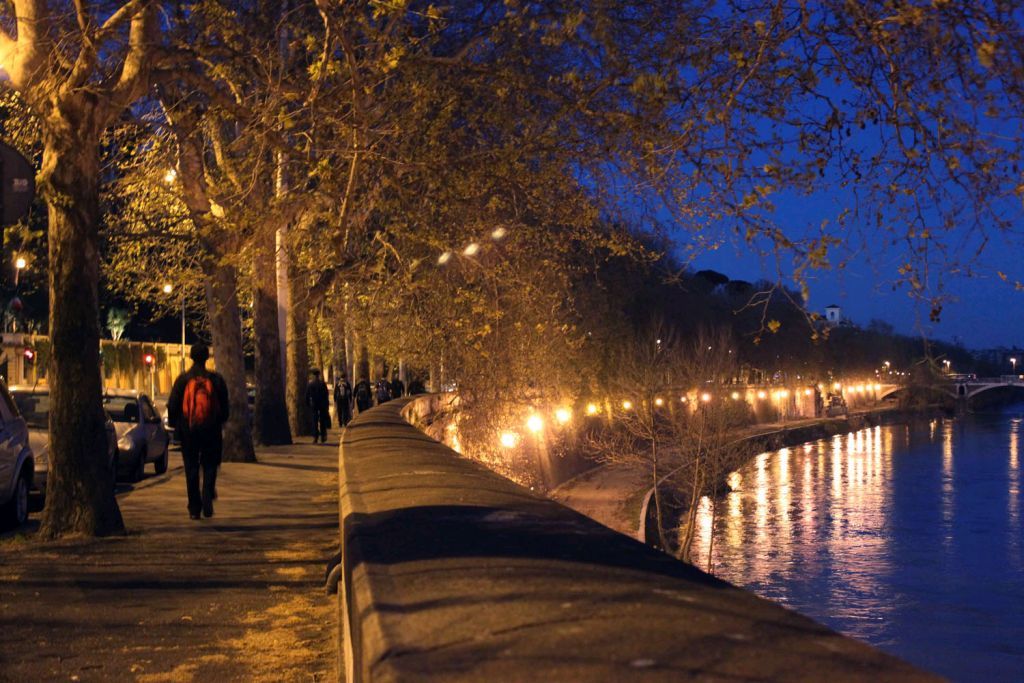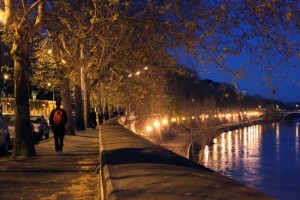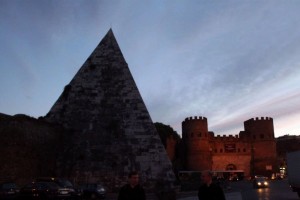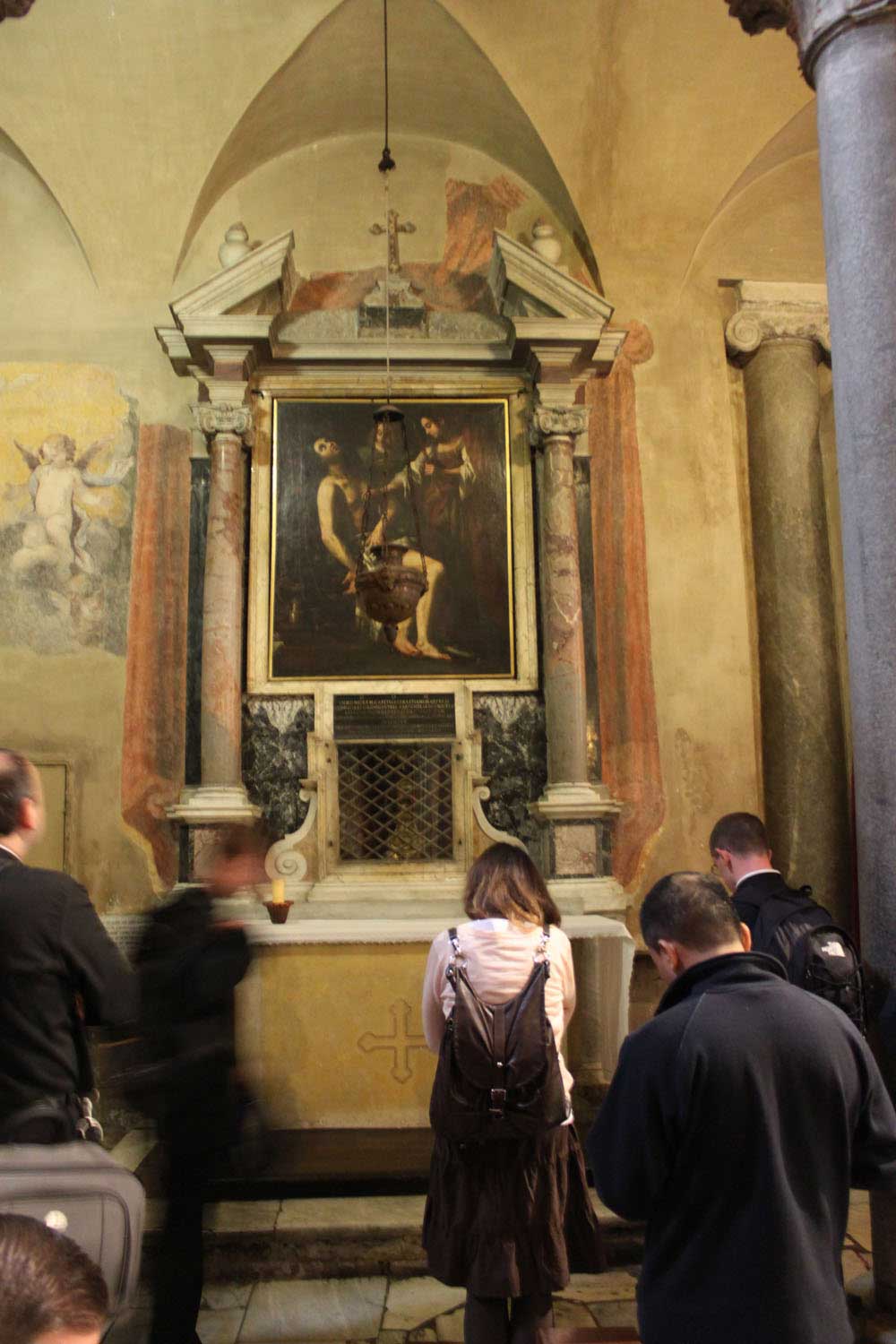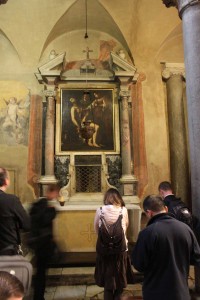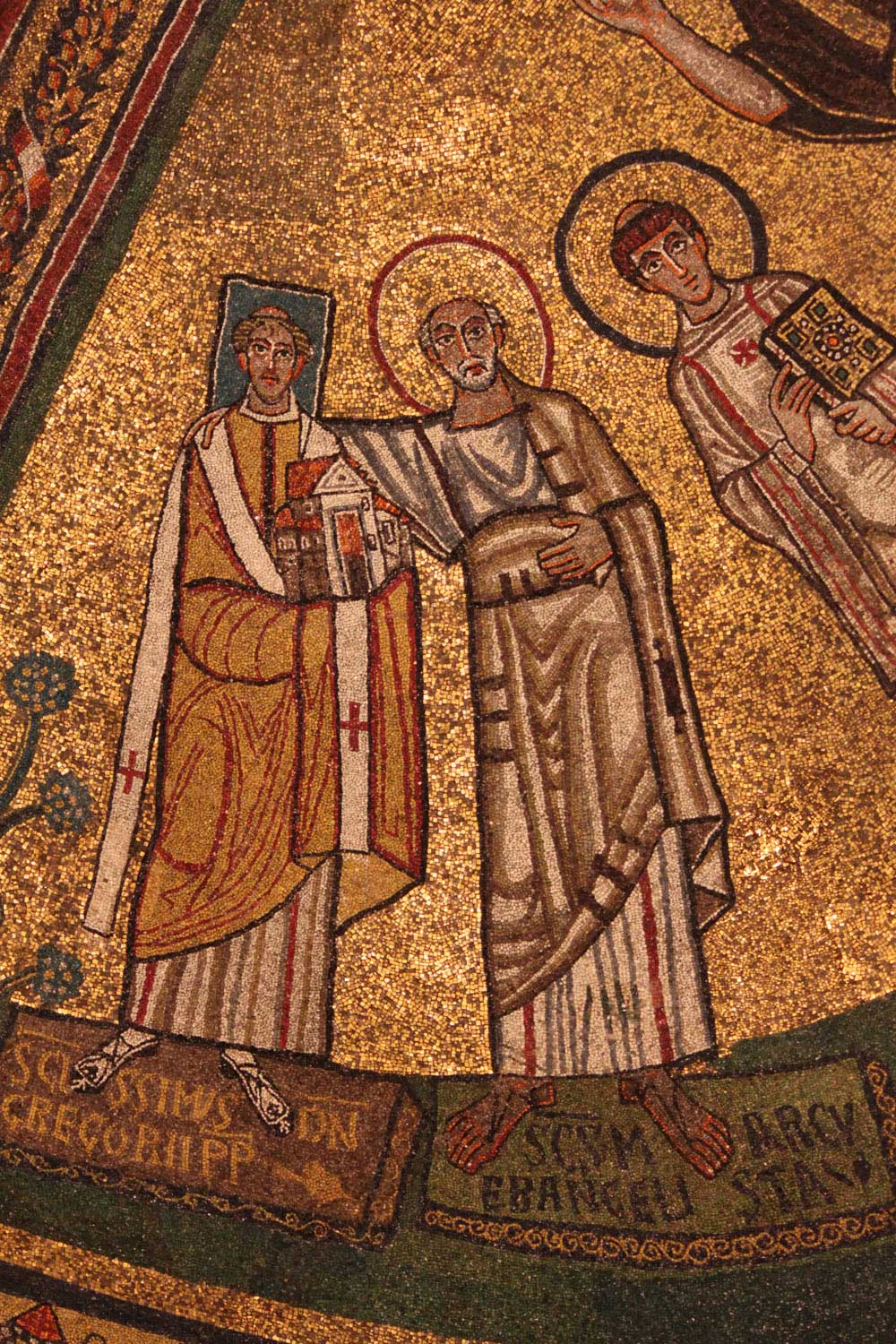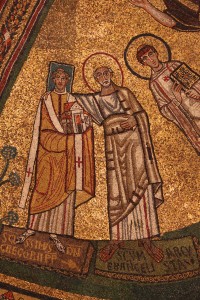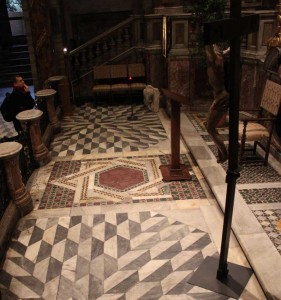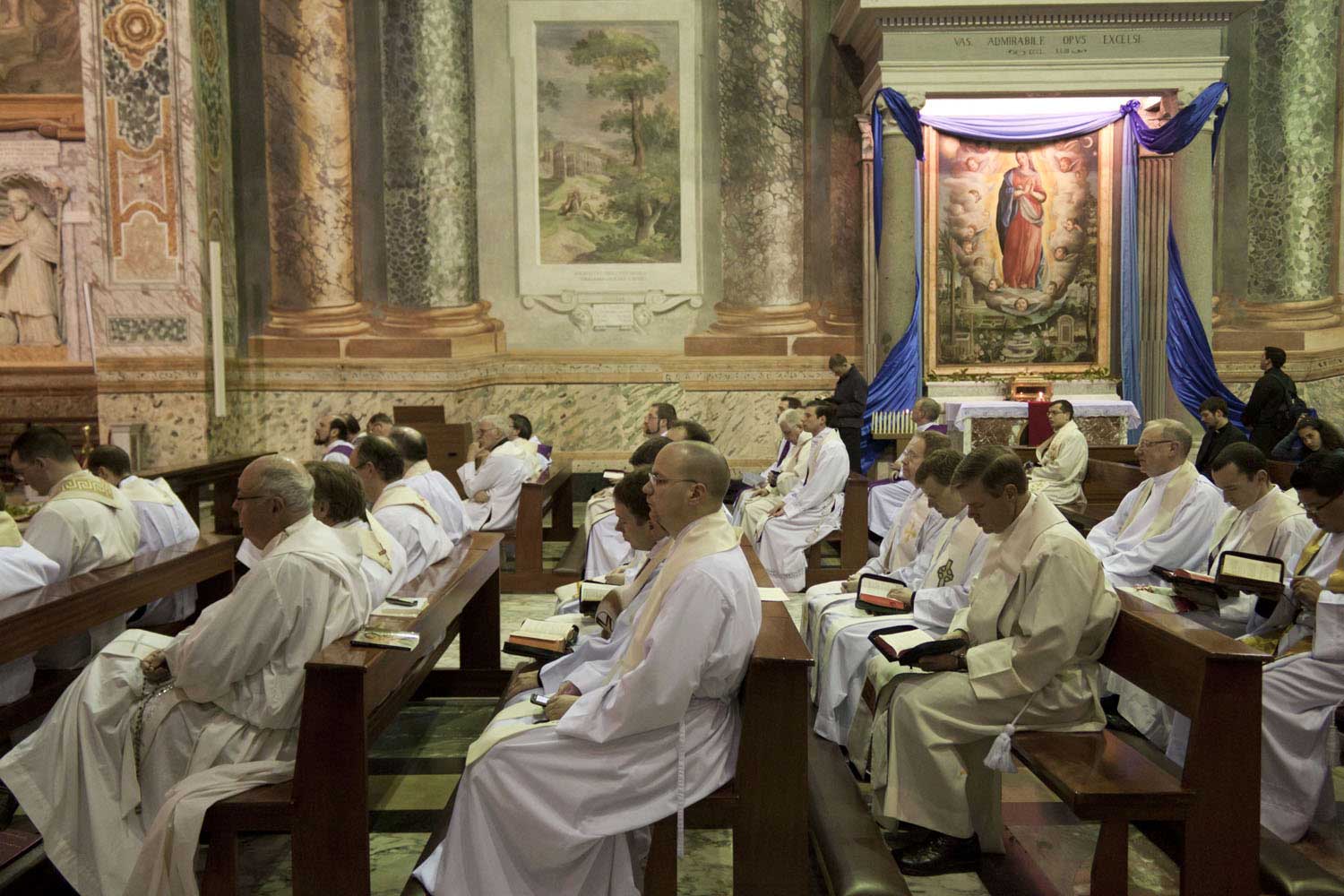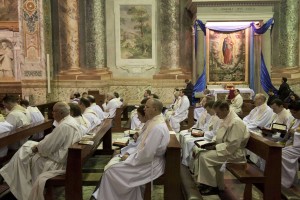“When he entered Rome, Paul was allowed to live by himself, with the soldier who was guarding him.” (Acts 28:16)
Paul’s final days
The book of Acts ends with Paul’s arrival in Rome and his preaching of the Gospel of Jesus Christ there while he awaits trial before the Roman emperor. Paul had been arrested for treason in Jerusalem, but he appealed to the emperor and so was transported to Rome for trial. He was held under house arrest at a Christian house in Rome, where he may have penned his Letter to the Philippians. Although the Bible does not record it, tradition holds that he was tried, found guilty, and sentenced to death by beheading sometime in the mid-60s AD in Rome.
Today’s church, Santa Maria in Via Lata (St. Mary’s on Broad Street), lies adjacent to the Corso, from Roman times a major street running out the north side of the city. One tradition holds that this was the very site of Paul’s house arrest, the Christian home where he spent the last few years of his life. Archaeological studies have found remnants of a building dating back to the first century AD under the current church.
Spreading the Gospel in season and out of season
The ending of the book of Acts signifies the fulfillment of the words which Jesus had spoken to his apostles: “You will be my witnesses in Jerusalem, throughout Judea and Samaria, and to the ends of the earth.” (Acts 1:8) Indeed, Paul’s preaching of the Gospel in Rome – the Caput Mundi, the center of the world – started a chain of events which would end with the entire Roman Empire accepting the Christian faith. Paul, of course, could not have foreseen this. All he knew was that he had been entrusted with the Gospel of Jesus Christ, and that he was called to be faithful to that message even under the duress of his confinement. We, too, can promote the spread of the Kingdom by holding fast to that same Gospel and preaching it in season and out of season, knowing that God’s Providence will bring our efforts to fulfillment.
Written by Aaron Querishi
Photos by Fr. Justin Huber

